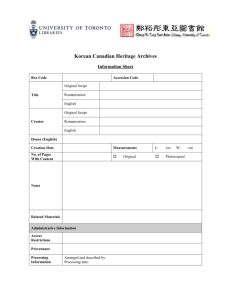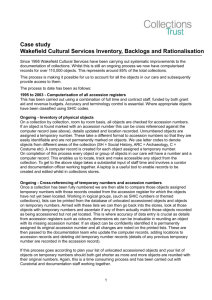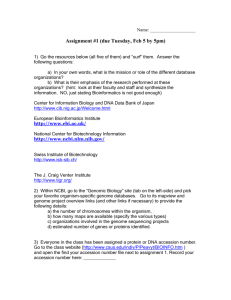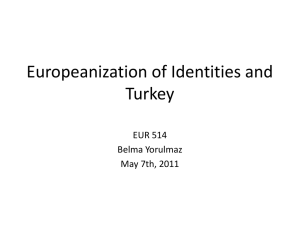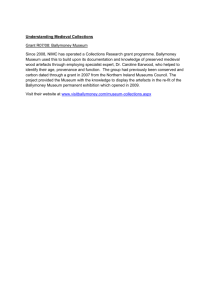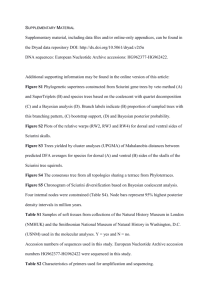Policy for the numbering of artefacts and
advertisement
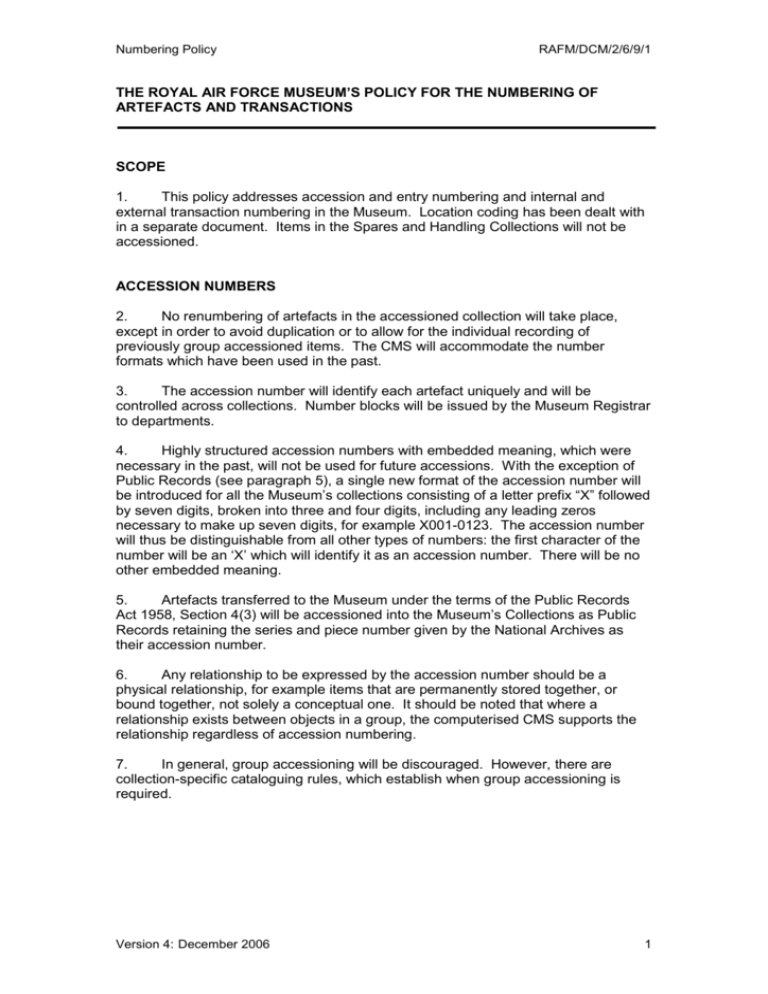
Numbering Policy RAFM/DCM/2/6/9/1 THE ROYAL AIR FORCE MUSEUM’S POLICY FOR THE NUMBERING OF ARTEFACTS AND TRANSACTIONS SCOPE 1. This policy addresses accession and entry numbering and internal and external transaction numbering in the Museum. Location coding has been dealt with in a separate document. Items in the Spares and Handling Collections will not be accessioned. ACCESSION NUMBERS 2. No renumbering of artefacts in the accessioned collection will take place, except in order to avoid duplication or to allow for the individual recording of previously group accessioned items. The CMS will accommodate the number formats which have been used in the past. 3. The accession number will identify each artefact uniquely and will be controlled across collections. Number blocks will be issued by the Museum Registrar to departments. 4. Highly structured accession numbers with embedded meaning, which were necessary in the past, will not be used for future accessions. With the exception of Public Records (see paragraph 5), a single new format of the accession number will be introduced for all the Museum’s collections consisting of a letter prefix “X” followed by seven digits, broken into three and four digits, including any leading zeros necessary to make up seven digits, for example X001-0123. The accession number will thus be distinguishable from all other types of numbers: the first character of the number will be an ‘X’ which will identify it as an accession number. There will be no other embedded meaning. 5. Artefacts transferred to the Museum under the terms of the Public Records Act 1958, Section 4(3) will be accessioned into the Museum’s Collections as Public Records retaining the series and piece number given by the National Archives as their accession number. 6. Any relationship to be expressed by the accession number should be a physical relationship, for example items that are permanently stored together, or bound together, not solely a conceptual one. It should be noted that where a relationship exists between objects in a group, the computerised CMS supports the relationship regardless of accession numbering. 7. In general, group accessioning will be discouraged. However, there are collection-specific cataloguing rules, which establish when group accessioning is required. Version 4: December 2006 1 Numbering Policy RAFM/DCM/2/6/9/1 8. To allow for group and individual level identification the accession number may carry an extension of an oblique character (/) followed by a running number in the range 001 - 999. In the rare cases where it is envisaged that a group will number more than 999 parts, sufficient consecutive accession numbers will be allocated at the outset to accommodate all items. Occasionally, in the Archive and Photographic departments, an item which is a member of a group may be broken down to one more level. The maximum number of levels will therefore be three (Group, member, sub-member). ENTRY NUMBERS 9. All artefacts entering the Museum under the terms of the entry policy (RAFM/DCM/2/6/4/1) will be assigned an entry number based on the entry form number. If several items on one entry form require unique identifiers, for example four objects on form number 166, they will have entry numbers 166/1, 166/2, 166/3 and 166/4. RETROSPECTIVE NUMBERING 10. Where two or more artefacts in a group are found to share an accession number, they will be distinguished by the addition of a suffix to that number. However, where two or more artefacts are found to share an accession number through error, one or more of the objects will be re-accessioned with new accession numbers. 11. When, as part of the Inventory, an unaccessioned artefact is being accessioned, the next available number in the new format will be allocated. No attempt will be made to fit it into the accession number sequence from its year of entry, or to fill apparent gaps in previous sequences of accession numbers. It should be noted that documentation on the CMS will show the date of entry/acquisition of the artefact, where known. EXTERNAL TRANSACTIONS 12. External transactions (entry, exit, loan in, loan out, transfer of title for acquisition, and disposal) will be numbered in order to identify uniquely the transaction for management purposes. This is particularly important as some transactions continue over an extended period, for example loans out. 13. Transaction numbers will be kept as simple as possible, will be unique (for that type of transaction) and will have as little embedded meaning as possible. The context will make clear the number’s meaning. 14. Transaction numbers will be allocated in blocks with forms, by the Museum Registrar to Departments. Ultimately, numbers will be assigned automatically by the CMS. Version 4: December 2006 2 Numbering Policy RAFM/DCM/2/6/9/1 INTERNAL MOVEMENT TRANSACTIONS 15. The Movement policy (RAFM/DCM/2/6/5/1) defines which movements will be recorded on transaction documentation and which will simply be recorded by a change of location on the CMS. STATIC RECORDS 16. Consideration of numbering in this area is deferred until policies and procedures for loss, damage, conservation, audit reference and valuation have been developed further. NUMBERING OF INTERPRETIVE, HANDLING AND SPARES COLLECTIONS 17. Numbering of items in the Interpretive, Handling and Spares Collections are defined separately. © 2006 Trustees of the Royal Air Force Museum Version 4: Approved by the Trustees December 2006 Version 4: December 2006 3
